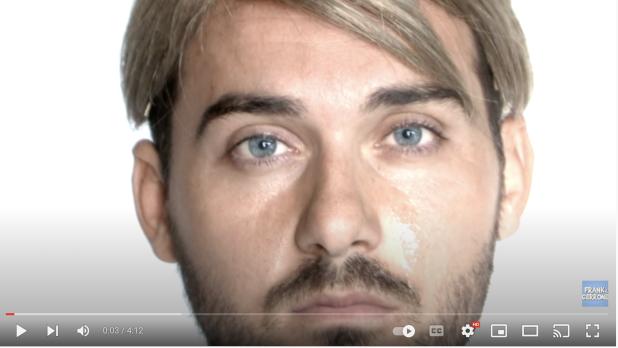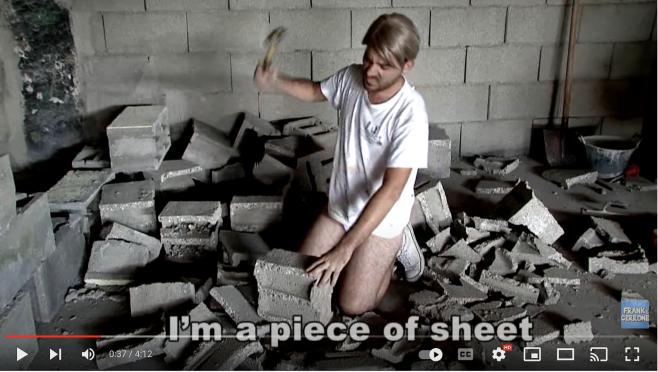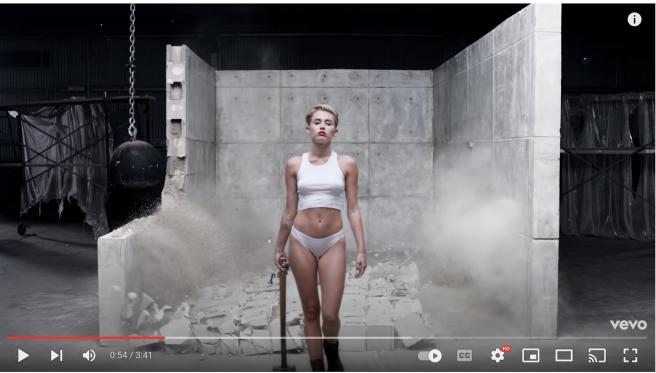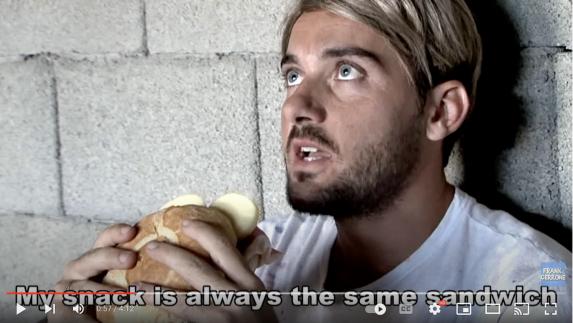Works Cited
Alighieri 1996 Alighieri, Dante. (1996) Dante: De Vulgari Eloquentia. Translated by Steven
Botterill. Cambridge: Cambridge University Press, 1996.
Allen and Russo 1997 Allen, Beverly, and Russo,
Mary. (1997) Revisioning Italy: National Identity and Global
Culture. 1st edition. Minneapolis: University Of Minnesota Press.
Aprile 2011 Aprile, Pino. (2011) Terroni: All That Has Been Done to Ensure That the Italians of the South Became
“Southerners.” New York: Bordighera Press.
Arola, Sheppard, and Ball 2014 Arola,
Kristin, Sheppard, Jennifer, and Ball, Cheryl E. (2014) “Multimodality as a frame for individual and institutional change.”
Hybrid Pedagogy.
Barton and Lee 2013 Barton, David, and Carmen Lee.
(2013) Language Online: Investigating Digital Texts and
Practices. 1st edition, Abingdon-on-Thames: Routledge, 2013.
Bourdieu 1984 Bourdieu, Pierre. (1984) Distinction: A Social Critique of the Judgement of Taste.
Cambridge: Harvard University Press.
Canagarajah 2011 Canagarajah, Suresh. (2011)
“Translanguaging in the Classroom: Emerging Issues for
Research and Pedagogy.”
Applied Linguistics Review, 2(1), pp. 1–28.
Cavanaugh 2012 Cavanaugh, Jillian R. (2012) Living Memory: The Social Aesthetics of Language in a Northern
Italian Town. 1st edition. Hoboken: Wiley-Blackwell.
Cavanaugh 2017 Cavanaugh, Jillian R. (2017) “Anything Can Happen on YouTube (or Can It?): Endangered Language and
New Media” in Keri Vacanti Brondo (ed.), Cultural
Anthropology: Contemporary, Public, And Critical Readings. Oxford: Oxford
University Press, pp. 88–95.
Cavanaugh and Shankar 2014 Cavanaugh,
Jillian R., and Shalini Shankar. (2014) “Producing Authenticity
in Global Capitalism: Language, Materiality, and Value.”
American Anthropologist, 116(1), pp. 51–64.
Cavanaugh and Shankar 2017 Cavanaugh,
Jillian R., and Shankar, Shalini. (2017) Language and
Materiality: Ethnographic and Theoretical Explorations. Cambridge:
Cambridge University Press.
Chambers 2008 Chambers, Iain. (2008) Mediterranean Crossings: The Politics of an Interrupted
Modernity. Durham: Duke University Press.
Chopra and Gajjala 2011 Chopra, Rohit, and
Gajjala, Radhika. (eds.) (2011) Global Media, Culture, and
Identity: Theory, Cases, and Approaches. 1st edition. Abingdon-on-Thames:
Routledge.
De Blasi 2012 De Blasi, Nicola De. (2012) Storia linguistica di Napoli. Rome: Carocci Editore.
Duke University 2022 Duke University. (2022) “The Medieval Kingdom of Sicily Image Database.”
The Medieval Kingdom of Sicily,
https://kos.aahvs.duke.edu/.
Earhart 2012 Earhart, Amy E. (2012) “Can Information Be Unfettered? Race and the New Digital Humanities
Canon.”
Debates in the Digital Humanities, pp. 309–18.
Everett 2009 Everett, Anna. (2009) Digital Diaspora: A Race for Cyberspace. Albany: SUNY
Press.
Fiormonte 2012 Fiormonte, Domenico. (2012) “Towards a Cultural Critique of the Digital Humanities.”
Historical Social Research/Historische Sozialforschung,
pp. 59–76.
Fiormonte 2021 Fiormonte, Domenico. (2021) “Taxation against Overrepresentation? The Consequences of
Monolingualism for Digital Humanities.”
Alternative Historiographies of the Digital Humanities,
edited by Kim, Dorothy and Koh, Adeline, 1st ed., punctum books.
DOI.org (Crossref),
https://doi.org/10.53288/0274.1.00.
Gonzales 2018 Gonzales, Laura. (2018) Sites of Translation: What Multilinguals Can Teach Us about Digital
Writing and Rhetoric. Illustrated edition, U OF M DIGT CULT BOOKS.
Gramsci and Callari 2011 Gramsci, Antonio,
and Antonio Callari. (2011) Prison Notebooks. Translated
by Joseph A. Buttigieg, Slp edition. New York: Columbia University Press.
Guerra 2015 Guerra, Juan C. (2015) Language, Culture, Identity and Citizenship in College Classrooms
and Communities. Abingdon-on-Thames: Routledge.
Hall 2019 Hall, Crystal. (2019) Digital Humanities and Italian Studies: Intersections and Oppositions.
Abingdon-on-Thames: Taylor & Francis.
Halpern and Gibbs 2013 Halpern, Daniel, and
Jennifer Gibbs. (2013) “Social Media as a Catalyst for Online
Deliberation? Exploring the Affordances of Facebook and YouTube for Political
Expression.”
Computers in Human Behavior, 29(3), Elsevier, pp.
1159–68.
Horner, Selfe, and Lockridge 2015 Horner, Bruce, Selfe, Cynthia, and Lockridge, Tim. (2015) Translinguality, Transmodality, and Difference: Exploring Dispositions and Change
in Language and Learning.
Enculturation.
Humphreys 2005 Humphreys, Lee. (2005) “Cellphones in Public: Social Interactions in a Wireless Era.”
New Media & Society, 7(6). Thousand Oaks, CA and New
Delhi: Sage Publications London, pp. 810–33.
Hutchby and Barnett 2005 Hutchby, Ian, and
Simone Barnett. (2005) “Aspects of the Sequential Organization of
Mobile Phone Conversation.”
Discourse Studies, 7(2). Thousand Oaks, CA and New
Delhi: Sage Publications London, pp. 147–71.
Kim and Stommel 2018 Kim, Dorothy, and Stommel,
Jesse, eds. (2018)
Disrupting the Digital Humanities.
punctum books, p. 514.
DOI.org (Datacite), doi:
10.21983/P3.0230.1.00.
Kress 2000 Kress, Gunther. (2000) “Multimodality: Challenges to Thinking about Language.”
TESOL Quarterly, 34(2), pp. 337–40.
Liu 2013 Liu, Alan. (2013) “Where Is
Cultural Criticism in the Digital Humanities?”
Debates in the Digital Humanities, pp. 490–509.
Lizárraga et al. 2015 Lizárraga, José Ramón, et
al. (2015) “Translingual Literacies in a Social Media Age:
Lessons Learned from Youth’s Transnational Communication Online.”
Multilingual Learners and Academic Literacies,
Abingdon-on-Thames: Routledge, pp. 117–44.
McLuhan 1995 McLuhan, Marshall. (1995) “The Playboy Interview.”
Essential McLuhan, Anansi Concord, Ontario, pp.
233–69.
Mignolo 2007 Mignolo, Walter D. (2007) “Delinking: The Rhetoric of Modernity, the Logic of Coloniality and
the Grammar of de-Coloniality.”
Cultural Studies, 21(2–3), pp. 449–514.
Nakamura 2002 Nakamura, Lisa. Cybertypes: Race, Ethnicity, and Identity on the Internet. 1st edition.
Abingdon-on-Thames: Routledge.
Norman 2013 Norman, Don. (2013) The Design of Everyday Things: Revised and Expanded Edition. Basic
books.
Palmeri 2012 Palmeri, Jason. (2012) Remixing Composition: A History of Multimodal Writing
Pedagogy. Carbondale: Southern Illinois University Press.
Pratt 1991 Pratt, Mary Louise. (1991) “Arts of the Contact Zone.”
Profession, pp. 33–40.
Risam 2019 Risam, Roopika. (2018) New Digital Worlds: Postcolonial Digital Humanities in Theory, Praxis, and
Pedagogy. Evanston: Northwestern University Press.
Rybas and Gajjala 2007 Rybas, Natalia, and
Gajjala, Radhika. (2007) “Developing Cyberethnographic Research
Methods for Understanding Digitally Mediated Identities.”
Forum Qualitative Sozialforschung / Forum: Qualitative Social
Research, 8(3), 3 Sept. 2007.
www.qualitative-research.net,
https://doi.org/10.17169/fqs-8.3.282.
Schneider 1998 Schneider, Jane, ed. (1998) Italy’s “Southern Question”: Orientalism in One
Country. 1st edition. Abingdon-on-Thames: Routledge.
Selber 2004 Selber, Stuart. (2004) Multiliteracies for a Digital Age. 1st edition. Carbondale:
Southern Illinois University Press.
Selfe and Takayoshi 2007 Selfe, Cynthia, and
Takayoshi, Pamela. (2007) “Thinking about Multimodality.”
Multimodal Composition: Resources for Teachers, pp.
1–12.
Shankar and Cavanaugh 2012 Shankar,
Shalini, and Cavanaugh, Jillian R. (2012) “Language and
Materiality in Global Capitalism.”
Annual Review of Anthropology, vol. 41, pp.
355–69.
Shipka 2011 Shipka, Jody. (2011) Toward a Composition Made Whole. Pittsburgh: University of Pittsburgh
Press.
Shipka 2016 Shipka, Jody. (2016) “Transmodality in/and Processes of Making: Changing Dispositions and
Practice.”
College English, 78(3), pp. 250–57.
UNESCO World Heritage Centre 2023 UNESCO World
Heritage Centre. (2023) “Historic Centre of Naples.”
UNESCO World Heritage Centre,
https://whc.unesco.org/en/list/726/. Accessed 2 Dec. 2022.
Verdicchio 1997 Verdicchio, Pasquale. (1997)
“The Preclusion of Postcolonial Discourse in Southern
Italy.”
Revisioning Italy: National Identity and Global Culture,
University of Minnesota Press, pp. 191–212.
Viola and Verheul 2019 Viola, Lorella, and
Verheul, Jaap. (2019) “The Media Construction of Italian
Identity: A Transatlantic, Digital Humanities Analysis of Italianità, Ethnicity,
and Whiteness, 1867-1920.”
Identity, 19(4), pp. 294–312.
Warner 2005 Warner, Michael J. (2005) “Ideology and Affect in Discourse in Institutions.”
Journal of Language and Politics, 4(2), John Benjamins,
pp. 293–330.
Won Lee 2022 Won Lee, Jerry. (2022) Locating Translingualism. Cambridge: Cambridge University
Press. DOI: https://doi.org/10.1017/9781009105361.










